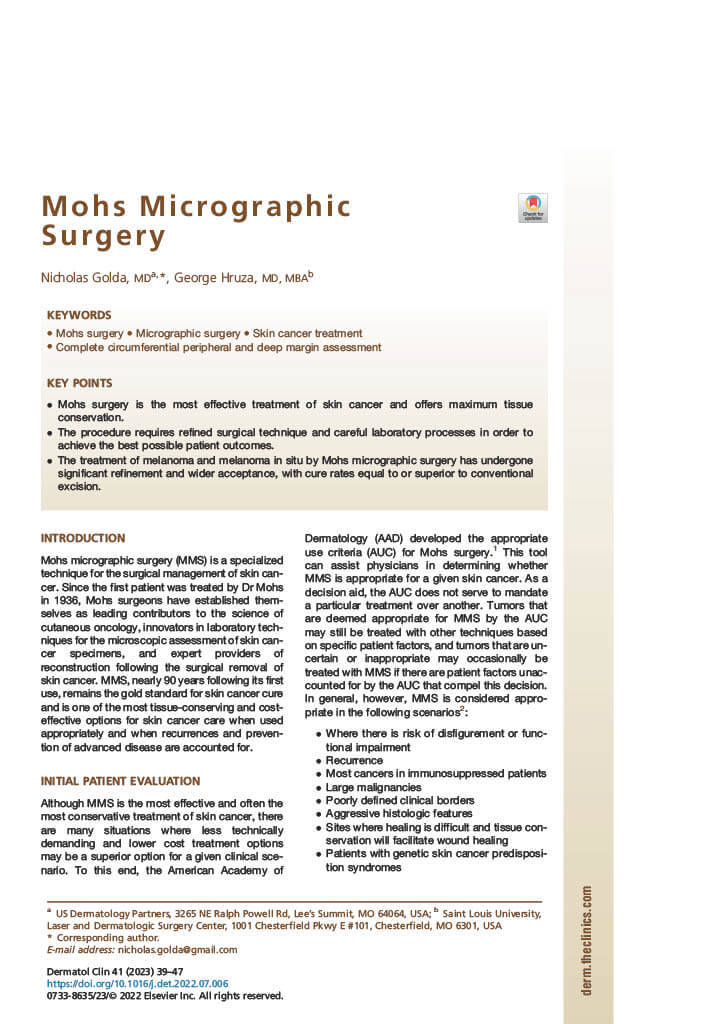Read Full Article HereKEYWORDS
- Mohs surgery Micrographic surgery Skin cancer treatment Complete circumferential peripheral and deep margin assessment
KEY POINTS
- Mohs surgery is the most effective treatment of skin cancer and offers maximum tissue conservation.
- The procedure requires refined surgical techniques and careful laboratory processes in order to achieve the best possible patient outcomes.
- The treatment of melanoma and melanoma in situ by Mohs micrographic surgery has undergone significant refinement and wider acceptance, with cure rates equal to or superior to conventional excision.
INTRODUCTION
Mohs micrographic surgery (MMS) is a specialized technique for the surgical management of skin cancer. Since the first patient was treated by Dr. Mohs in 1936, Mohs surgeons have established themselves as leading contributors to the science of cutaneous oncology, innovators in laboratory techniques for the microscopic assessment of skin cancer specimens, and expert providers of reconstruction following the surgical removal of skin cancer. MMS, nearly 90 years following its first use, remains the gold standard for skin cancer cure and is one of the most tissue-conserving and cost-effective options for skin cancer care when used appropriately and when recurrences and prevention of advanced disease are accounted for.
INITIAL PATIENT EVALUATION
Although MMS is the most effective and often the most conservative treatment of skin cancer, there are many situations where less technically demanding and lower-cost treatment options may be a superior option for a given clinical scenario. To this end, the American Academy of Dermatology (AAD) developed the appropriate use criteria (AUC) for Mohs surgery.1 This tool can assist physicians in determining whether MMS is appropriate for a given skin cancer. As a decision aid, the AUC does not serve to mandate a particular treatment over another. Tumors that are deemed appropriate for MMS by the AUC may still be treated with other techniques based on specific patient factors, and tumors that are uncertain or inappropriate may occasionally be treated with MMS if there are patient factors unaccounted for by the AUC that compel this decision. In general, however, MMS is considered appropriate in the following scenarios2:
- Where there is risk of disfigurement or functional impairment
- Recurrence
- Most cancers in immunosuppressed patients
- Large malignancies
- Poorly defined clinical borders
- Aggressive histologic features
- Sites where healing is difficult and tissue conservation will facilitate wound healing
- Patients with genetic skin cancer predisposition syndromes
Mohs Micrographic Surgery
October 28, 2022








